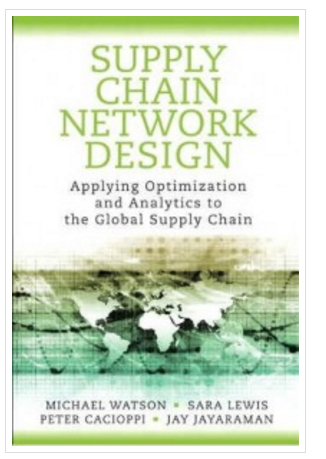Dr. Watson Says: |
 |
| ...If you are trying to locate your warehouses to provide the best possible service time, this is the model you want to use... |
|
What Do You Say?
|
|
|
|
When we wrote the book Supply Chain Network Design, we intentionally started with a very simple model to help people build intuition on how the math works. This simple model optimized the location of facilities to minimize the distance to the customers. This model did not consider costs, capacities, multiple products, or even the inbound source.

At first glance, this model may not seem very useful since it leaves so much out.
But, we stressed in the book (and to the clients we work with) that this model can solve many problems. If you are trying to locate your warehouses to provide the best possible service time, this is the model you want to use. If service time is your top priority, adding costs, capacities, and multiple products to the model will not help you find better locations.
That is, minimizing the distance to the customers is sometimes all you need to consider to determine good locations for your warehouses. For example, Amazon spoke at CSCMP about their new 1-hour service in Manhattan. When they located this facility, I’m sure they wanted the warehouse to be in the best location to reach their customers in an hour. (They picked a site across the street from the Empire State Building.) They would not have wanted to add warehousing and inbound transportation costs to the model and have the model come back and suggest a cheaper place in New Jersey.
Previous Columns by
Dr. Watson |
|
|
This does not mean that you should not consider cost. But, considering cost does not mean that you should include it in the model. You should run multiple scenarios to determine options that meet your service requirements. You might want to try scenarios with one warehouse or two. Or, you might find the best location to minimize distance and then find the 2nd best location to minimize distance and so on. Then, once you have these alternatives, you would determine the cost and other implications of each and make a decision on which one you want to implement.
There is a lot of recent evidence that companies are considering fast service (and hence short physical distance) as the top criteria for warehouse locations. A simple mathematical model that only considered distance could be all that is needed in the following examples:
|
1 |
Amazon is rolling out 1-hour delivery. In this case, the best locations are driven by the ability to be very close to customers—even locating a warehouse in a dense metro area.
|
2 |
Kohl’s is starting to experiment with same day delivery.
|
3 |
A recent article in the Chicago Tribune mentioned the flurry of activity as online retailers such as Walmart, Amazon, Macy’s, Home Depot, Nordstrom, and Target have added warehouses with the goal of being able to deliver to more customers within 1- and 2-days.
|
Final Thoughts
|